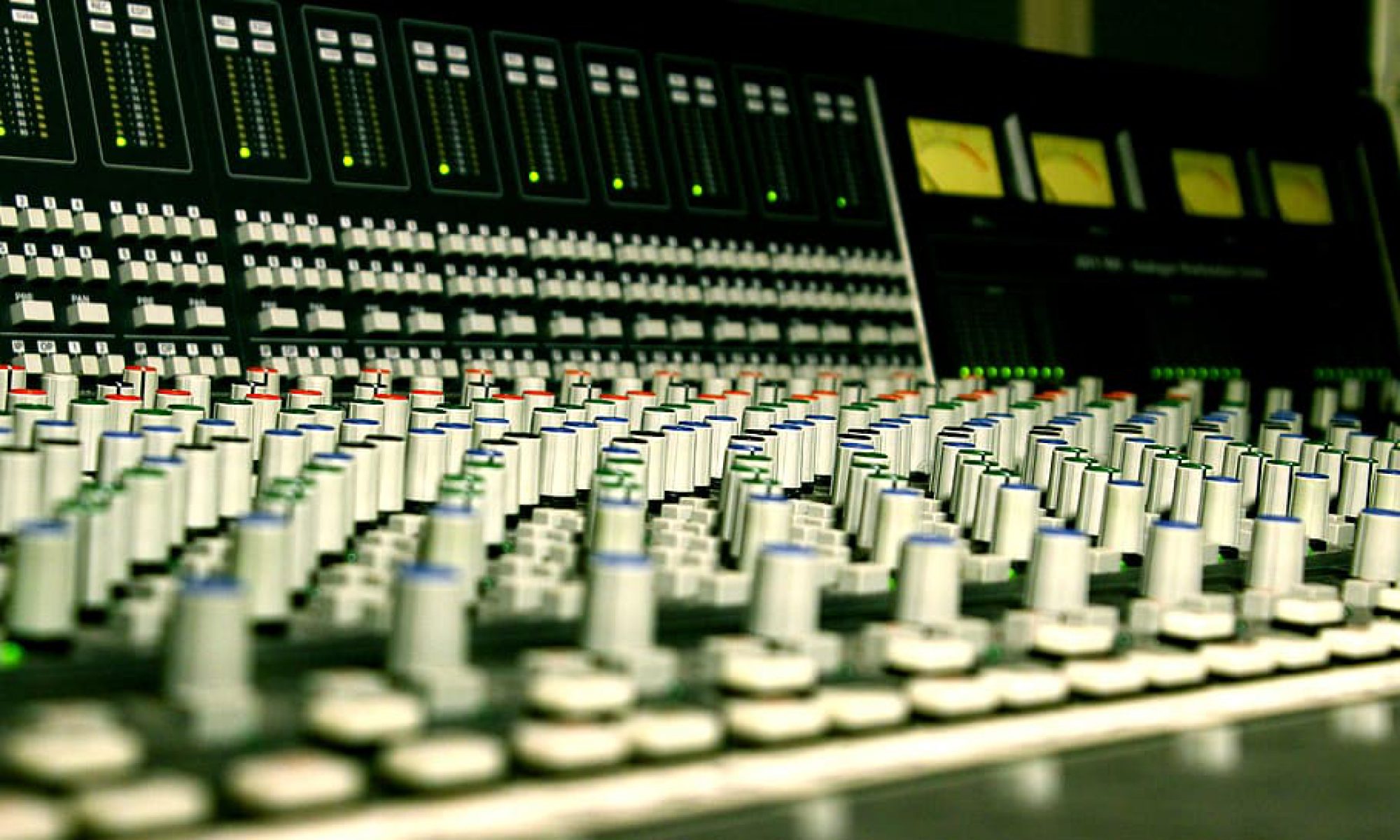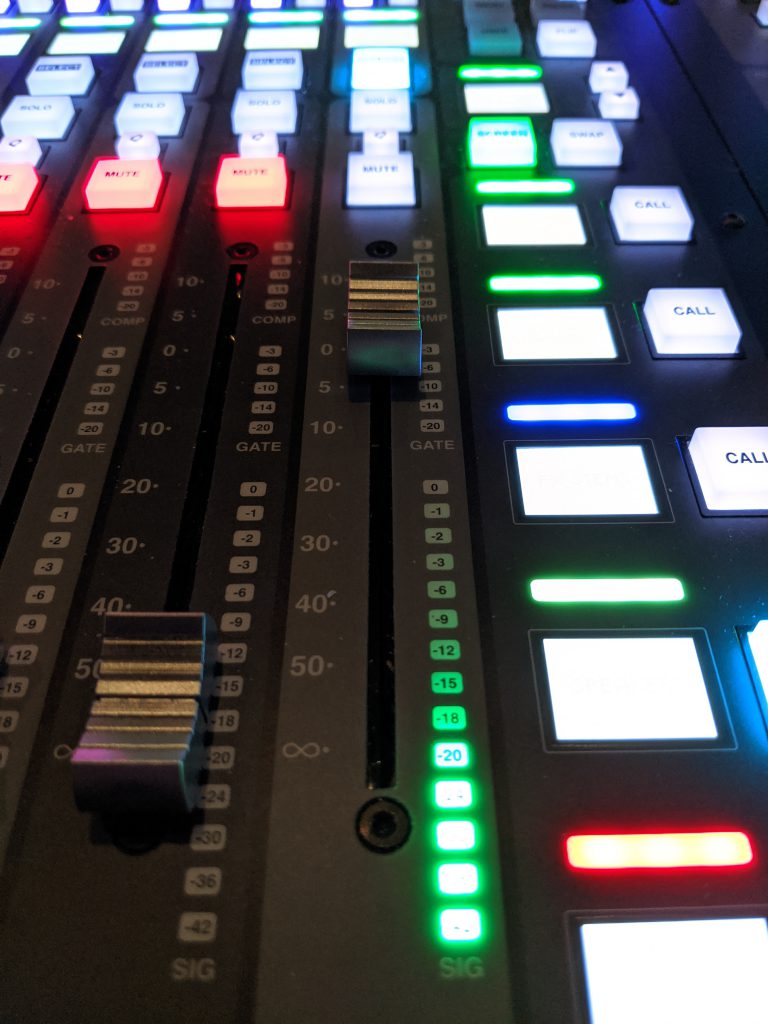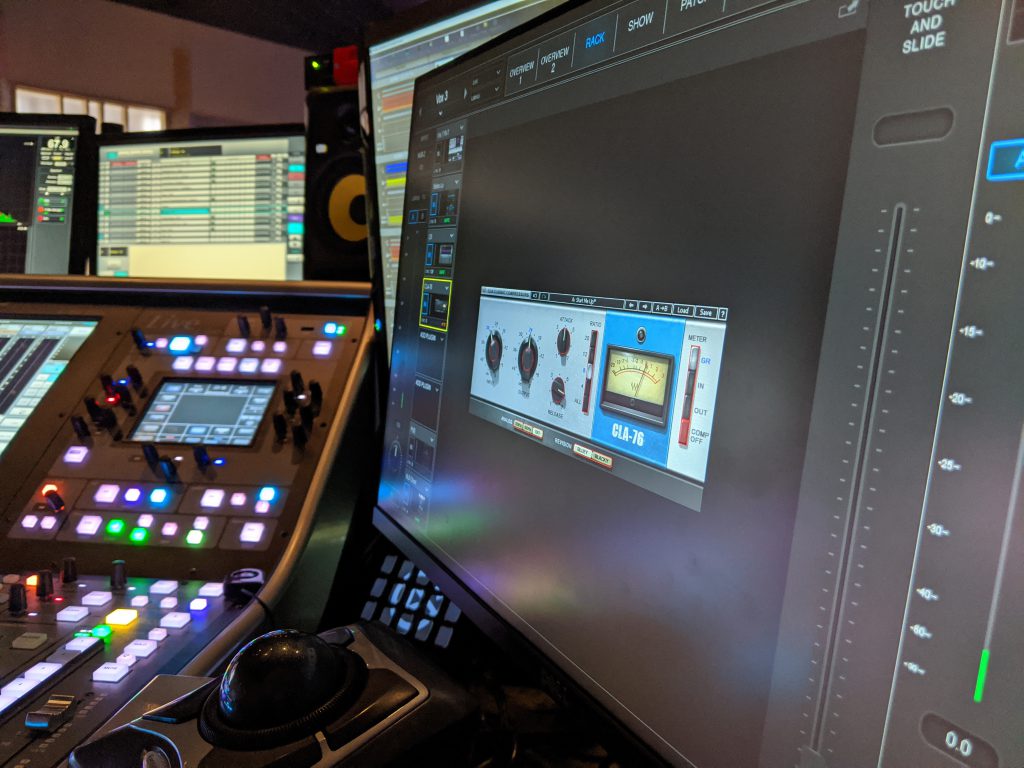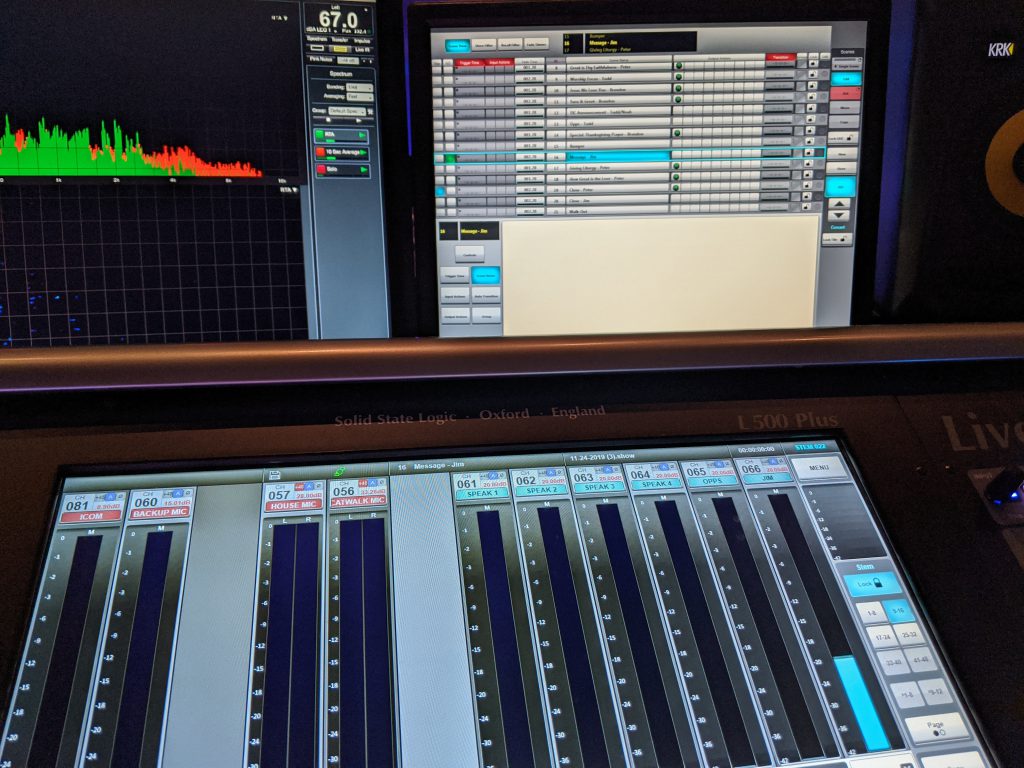This week I decided to mix it up a little bit and do a one-off post on my pre-show routines. We all have those things that we do that help us prepare for what’s on our docket for that day of audio work so I thought I’d share mine with the hopes that if you don’t have any routines, you might pick some up, and that if you do that you’d share it back.
I thought I should start with what you should be doing to prepare for a recording or show before you even start. It is incredibly important to know your artist as well as their audience. In order to accomplish this I find myself listening through the tracks either in our planning software or finding equivalent recordings on spotify so that I’m preparing and thinking about what things should be sounding like. Secondarily, and I’ve talked about this in previous posts, before I even have a rehearsal I try and make sure that my template is up to date with all the fixes I’ve discovered recently. I don’t know about you guys but I hate fixing problems more than once. Going into this Christmas season I have really focused on fixing as many issues as I can before the madness begins. I didn’t quite get to all of them but through prioritization and time management I’ve crossed off most of the issues I’ve observed over the last few months and implemented a few updates and changes as well that have been on the horizon (i.e. further dante implementation, production computer cleaning and maintenance as well as performance checks, etc) for quite some time. The last thing I get done before a show is the patch list. Why do I wait you ask? Well as I fix issues or implement some upgrades things naturally change. I don’t like making the patch lists, creating showfiles, etc before I know that our architecture is correct. For instance, I wanted to get our multitrack playback system working to both consoles. This required a bit of digital craziness within my console to implement and also required modifying my monitor consoles channel order list to match. If I’d created a show or done any patching, that may have all been for naught, and we’d be making that show again if I hadn’t gotten that done first. Lastly, before rehearsal for the bigger shows, I’ll try and put together a stage plot so that when the crap hits the fan, I’ll have a physical piece of paper that shows spatially how things are setup.
During my rehearsal I also have a routine for how I work through getting my console setup and all customized for each week. My first step is always gain staging. My template gets things pretty close but there are always adjustments to be made. When I load my showfile the meters are set to meter the audio right after my trim (FOH in my setup is not the gain master, our monitor desk is so I am trimming). This allows me to gain stage properly. After sound check is over I’ll switch to meter the audio just before the fader. This allows me to monitor how things look coming back out of waves. In theory, because of the 64 bit floating point processing in my console, clipping after the preamp is in theory impossible but I still like to avoid testing that. Also during rehearsal I’m checking wireless transmit packs, checking to make sure we aren’t overloading the receivers for instruments, that rf signal is strong and consistent, and that everything is patched and recording correctly in Reaper (our DAW of choice for multi-track recording). That last one is particularly important because I love to do playback as much as possible/needed so that I can walk around the room, listen for the small things to change, and just make sure my cues are what they need to be. At some point I try to make it a point to step through my automation cues on my own and just confirm everything as well before show day.
The day of the show is all about checking my gear. I usually arrive early and do some playback if I am setup to do so. This allows me to do some walking around the room again as the mix is playing so I can get a feel for the room that day. I’ll also be thinking through the show mentally and focus on those areas that require my input or where timing is critical. At some point as well, I insist on a quick input check with the band. Usually just the length of one song is more than enough. This allows for me to get one last glance at the signal path and make sure everything is patched correctly. It also allows for a practical battery level check for any wireless gear in play as well. After that is all over it’s just mixing time. Just a few minutes before things kick off there is a quick trip to the head and then back to the console to have some fun!
So now that you think I’m crazy for having all these routines let me explain why. Over the years I’ve been through quite a bit of craziness in shows, load-ins, meetings, etc and that experience has taught that probably one of the most important things for an audio technician is consistency. Obviously the mix has to be good and well executed but consistency across multiple weeks/shows is what builds trust with musicians. They need to know that you are working as hard as they are. So yes, all these routines sound like a lot, but until I wrote this series, I’ve been doing all this stuff for so long, I didn’t even know that I do it every time. What things do you do to prepare for your shows/concerts? Have any routines that you think I should add? Let me know in the comments below. If you have any questions about what I’ve said be sure to either comment below or email me at daniel@studiostagelive.com. If you have enjoyed reading these posts go ahead and subscribe at this link and you’ll get a message whenever something new has been posted. See you all on the flipside!



